Total Symmetry Chess
After I presented my Fischer-Benko Chess (FBC) to many of my friends, and to people with whom I play standard Chess and Chess960 at Chess.com and Lichess.org soon after I recieved their opinion on it. Many of the people like it and find it interesting and difficult but, even from those who were really friendly toward me, I received some harsh critics. In short, they believe that asymmetry is too wild to be tamed. I tried to explain them that the better player has a chance to choose superb position for his/her 5 pieces out of 8. Yes, it puts better player into a better position but so what? Is it not a goal of every chess variant that better players always win? Anyway, I decided to please critics too, and therefore I created and tested this variant: Total Symmetry Chess (TSC). This is also a random position chess, but the pieces are placed symmetrically in regard to not just one, but two symmetry axises, vertical and horizontal. There are 'only' 24 random positions but all of them are as fair for both players as the position of the standard chess. If someone is ready to develop and/or study 24 opening theories I'd be truly amazed! The rules are identical to those of standard chess with only one exception. There is no castling. One of 24 random positions is actually, the standard chess position but without castling it is not the same game any longer.
Setup
We first place pawns on their places like in standard chess. For the setup of pieces we cast a single die.
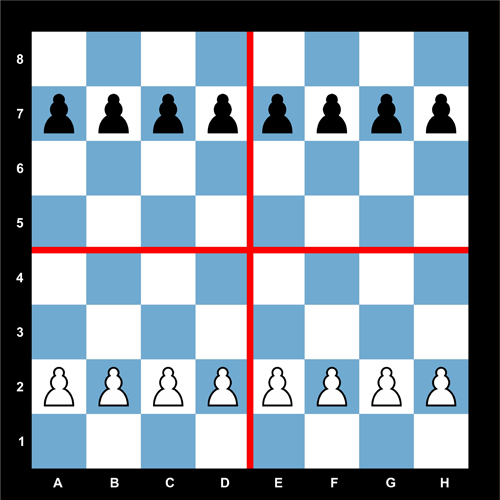
We cast a die to determine place for rooks first (but it can be any other piece). We need a number from 1 to 4. If we get a bigger number whe throw the die again.
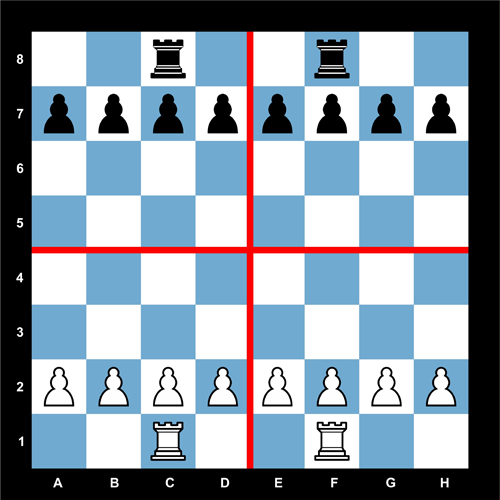
I got number 3 so I placed rooks like in picture above, symmetricay on all sides in regard to vertical and horizontal axises.
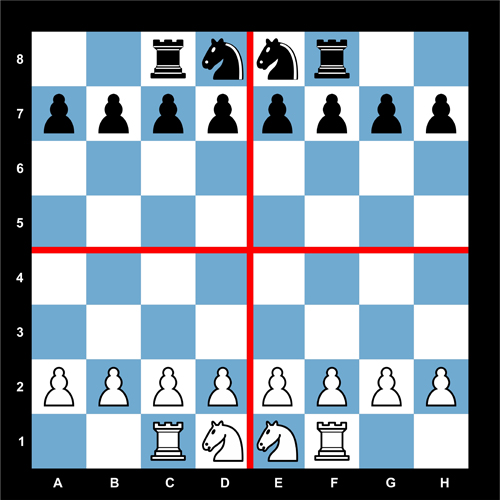
We cast a die again for secod type of pieces, in this case for Knights, and whatever number do we get, we divide it roughly with 2 to get a number from 1 to 3 (e.g. 1 or 2 = 1, 3 or 4 = 2, 5 or 6 = 3). So we need to die a cast only once. I got number 5 and placed knights at their third free squares in respect to both symmetry axises.
Now, we a need a position for bishops. Once again, we cast a die just once. Odd numbers = 1, even numbers = 2.
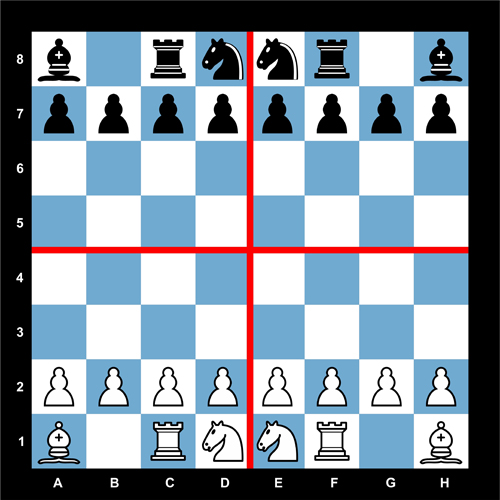
I got odd number and placed bishops at their first free squares.
We don't need to throw a die again. Royal pieces go to the remaining free squares with only one rule: the white queen must be placed on white square and the black one on black square.
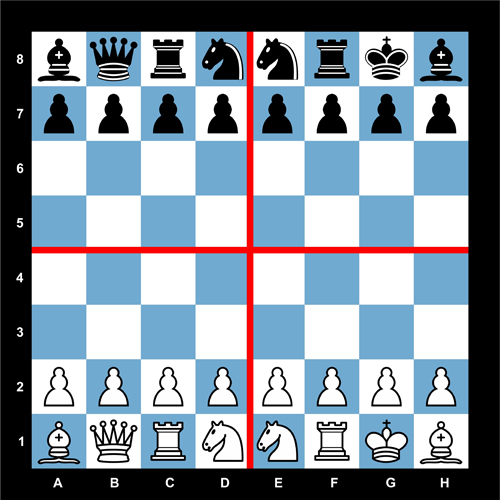
From this position, we play the game normally according to the rules of chess but without castling.
Here you can see some interesting starting positions out of 24 possible.
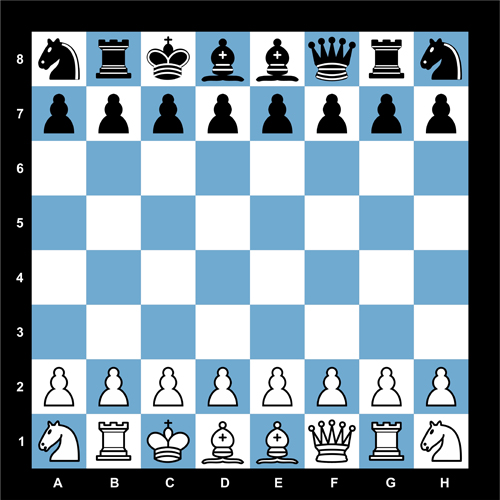
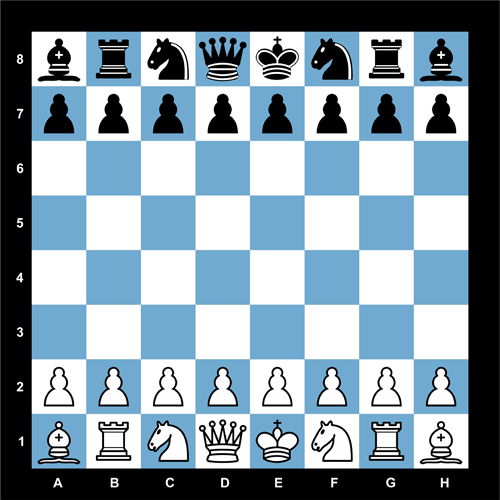
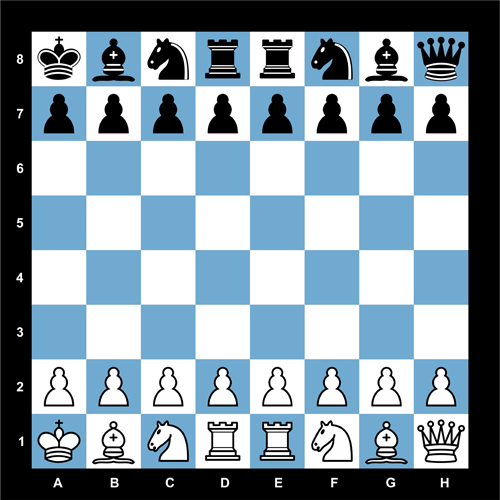
I've been playing these positions against computer for some time. The feeling is much different from Chess960 or from my own Fischer-Benko Chess. There is some beauty in all these positions and they are quite different among themselves. This is not a commercial chess variant and everybody is welcome to play it. I hope you gonna like it!
 This 'user submitted' page is a collaboration between the posting user and the Chess Variant Pages. Registered contributors to the Chess Variant Pages have the ability to post their own works, subject to review and editing by the Chess Variant Pages Editorial Staff.
This 'user submitted' page is a collaboration between the posting user and the Chess Variant Pages. Registered contributors to the Chess Variant Pages have the ability to post their own works, subject to review and editing by the Chess Variant Pages Editorial Staff.
By Davor Vujacic.
Last revised by Davor Vujacic.
Web page created: 2020-06-22. Web page last updated: 2020-07-02
